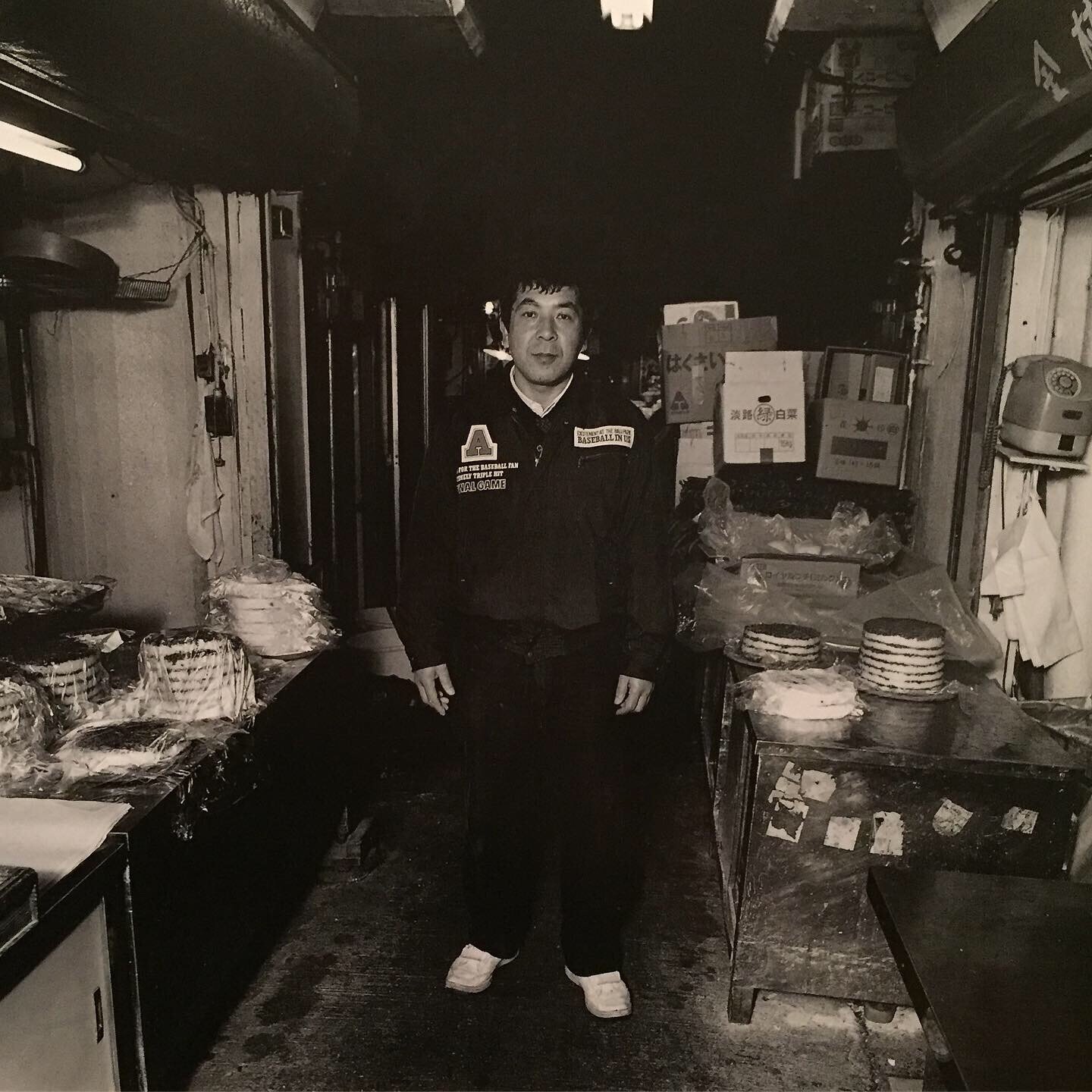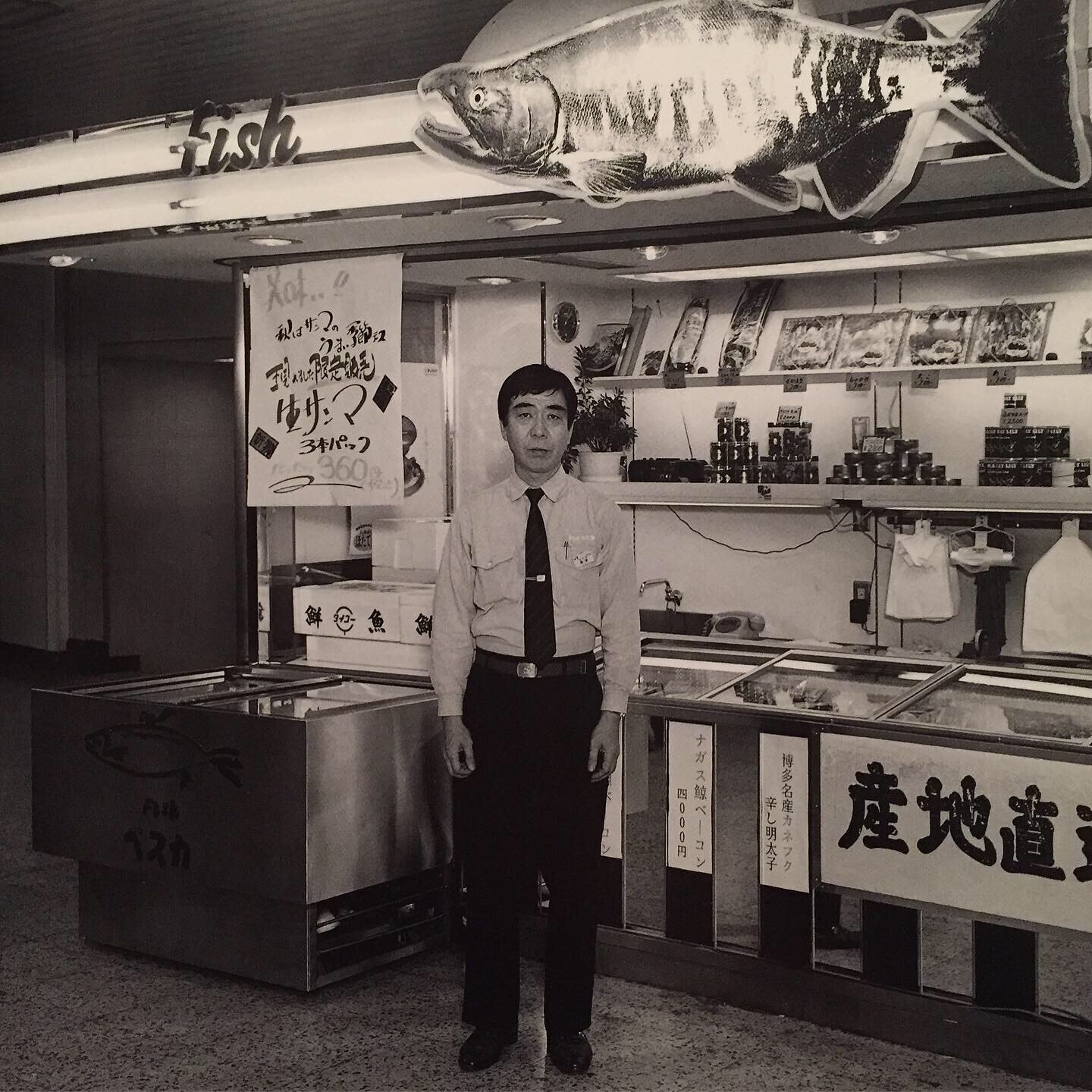Father by George Hashiguchi
Using the method characteristic of his work from this period (17-year-old Map, Couple, and Zoo), Hashiguchi travelled across Japan between June 1989 and March 1990 photographing 112 men of any occupation; all but 1 of whom having answered ‘yes’ to his question ‘excuse me, are you a father?’
In his postscript to the book, Hashiguchi describes the irony that in a patriarchal society there is a general avoidance of the father figure’s reality as an individual human being, both from those who look up to him, and from fathers themselves who ‘do not speak their own minds, but bury their real feelings deep within as the years mount.’
If I were to describe Hashiguchi’s work in terms of its precision and plurality, its apparent lack of personal discrimination within his given definition of its subject, it sounds like a kind of census - using the sublimation of individuals (Fatherhood, or a map drawn using 17-year-olds) to take a cross-section view of a moment in Japanese society (1 of the 112 men suffers from ‘Minamatabyō’ - a disfiguring and debilitating illness due to eating fish poisoned with industrial mercury waste). In fact, looking at the photographs you see that they express a very different relation to use/value, and attempt to depart from normative images of the human and dwell in the truly individual - ‘things which should fundamentally not be used and thrown away’. (The poisoned man is a fisherman - ‘I have always enjoyed catching and eating fish, and I still do.’)
Very good condition, first edition, hardback with obi band. Slight creasing to dust jacket and denting to book cover. 1990
Using the method characteristic of his work from this period (17-year-old Map, Couple, and Zoo), Hashiguchi travelled across Japan between June 1989 and March 1990 photographing 112 men of any occupation; all but 1 of whom having answered ‘yes’ to his question ‘excuse me, are you a father?’
In his postscript to the book, Hashiguchi describes the irony that in a patriarchal society there is a general avoidance of the father figure’s reality as an individual human being, both from those who look up to him, and from fathers themselves who ‘do not speak their own minds, but bury their real feelings deep within as the years mount.’
If I were to describe Hashiguchi’s work in terms of its precision and plurality, its apparent lack of personal discrimination within his given definition of its subject, it sounds like a kind of census - using the sublimation of individuals (Fatherhood, or a map drawn using 17-year-olds) to take a cross-section view of a moment in Japanese society (1 of the 112 men suffers from ‘Minamatabyō’ - a disfiguring and debilitating illness due to eating fish poisoned with industrial mercury waste). In fact, looking at the photographs you see that they express a very different relation to use/value, and attempt to depart from normative images of the human and dwell in the truly individual - ‘things which should fundamentally not be used and thrown away’. (The poisoned man is a fisherman - ‘I have always enjoyed catching and eating fish, and I still do.’)
Very good condition, first edition, hardback with obi band. Slight creasing to dust jacket and denting to book cover. 1990
Using the method characteristic of his work from this period (17-year-old Map, Couple, and Zoo), Hashiguchi travelled across Japan between June 1989 and March 1990 photographing 112 men of any occupation; all but 1 of whom having answered ‘yes’ to his question ‘excuse me, are you a father?’
In his postscript to the book, Hashiguchi describes the irony that in a patriarchal society there is a general avoidance of the father figure’s reality as an individual human being, both from those who look up to him, and from fathers themselves who ‘do not speak their own minds, but bury their real feelings deep within as the years mount.’
If I were to describe Hashiguchi’s work in terms of its precision and plurality, its apparent lack of personal discrimination within his given definition of its subject, it sounds like a kind of census - using the sublimation of individuals (Fatherhood, or a map drawn using 17-year-olds) to take a cross-section view of a moment in Japanese society (1 of the 112 men suffers from ‘Minamatabyō’ - a disfiguring and debilitating illness due to eating fish poisoned with industrial mercury waste). In fact, looking at the photographs you see that they express a very different relation to use/value, and attempt to depart from normative images of the human and dwell in the truly individual - ‘things which should fundamentally not be used and thrown away’. (The poisoned man is a fisherman - ‘I have always enjoyed catching and eating fish, and I still do.’)
Very good condition, first edition, hardback with obi band. Slight creasing to dust jacket and denting to book cover. 1990








